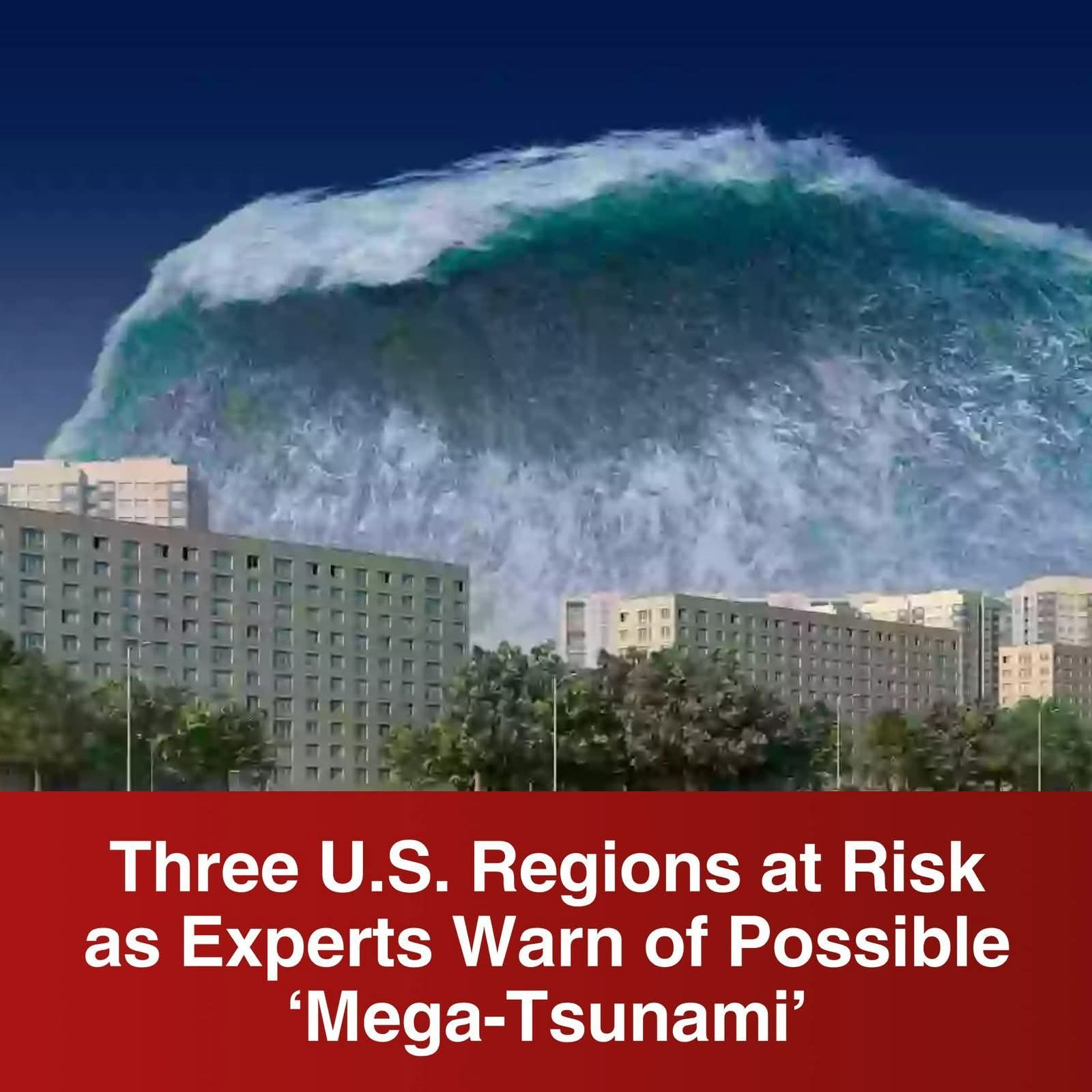Experts Say 3 Major U.S. Regions Face Risk of Tsunamis and Flooding — Here’s What You Need to Know 🌊⚠️

When most people think of tsunamis, they imagine faraway places like Japan or Indonesia. But according to recent warnings from disaster experts, several areas in the United States are also at serious risk—and many people living there have no idea.
Whether you live near the coast or inland, understanding the risk and being prepared can save lives. Here are the three U.S. regions where the danger is very real.
1. Pacific Northwest: Washington, Oregon, Northern California 🌲🌊
This region sits on top of the Cascadia Subduction Zone, a major fault line where two tectonic plates collide. If it slips, it could trigger a massive earthquake followed by a devastating tsunami—similar to the 2011 disaster in Japan.
Experts say a major Cascadia quake could happen within our lifetime, and coastal towns might have just 15 to 20 minutes to evacuate after the quake hits.
Signs to watch for:
- Sudden shaking
- Water pulling away from the shore
- Loud roaring from the ocean
2. Southern California: Los Angeles and Coastal Cities 🌴🌆
Southern California is known for earthquakes, but many forget that quakes beneath the ocean could create tsunamis. Even underwater landslides caused by seismic activity could send waves crashing toward shore.
While the risk is lower than in the Pacific Northwest, the dense population and tourist traffic make it a high-concern area. Flooding from tsunamis or storm surges could cause chaos, especially near popular beaches.
What you can do:
- Know the evacuation routes
- Stay away from the beach after an earthquake
- Pay attention to local tsunami warning systems
3. Hawaii and U.S. Territories in the Pacific 🏝🌐
Hawaii sits in the middle of the Pacific Ocean, making it extremely vulnerable to tsunamis from earthquakes that happen anywhere around the Pacific Rim. In fact, Hawaii has been hit by destructive tsunamis before—in 1946 and 1960.
The islands now have advanced alert systems, but experts still warn of short notice and limited evacuation options.
If you’re visiting or living there:
- Learn the local sirens and signals
- Move to higher ground immediately after a strong quake
- Avoid the coastline during alerts
Final Word 🛑
Tsunamis and coastal flooding may seem unlikely, but experts stress: it’s not a matter of if—but when. Whether you’re a resident or tourist, knowing the risks and having a plan can mean the difference between life and death.
Stay aware, stay safe, and always listen to local emergency alerts.






